On the final day of 2013 – Grand Central’s centennial year – there’s one more station that I’d like to take a visit to. Several years ago, when we visited during our Tuesday Tour, we saw only part of the station, the tunnels and the platform. But beyond the current station’s doors is an edifice whose façade has remained fairly similar for over 90 years, though the inside has drastically changed. The New York Central’s station at Mount Vernon, designed by Warren and Wetmore, was at one time one of Westchester’s beautiful stations. Once it was on par with the great stations at Yonkers and White Plains – but while Yonkers survives and White Plains was razed, Mount Vernon exists in a strange limbo. As the New York Central’s financial woes became painfully obvious, the railroad began selling off the very buildings that were once symbols of their might. In 1959, Mount Vernon station was sold to local businessman who converted it to serve commercial purposes. The waiting room was dismantled and the cavernous space split into two floors, and the express room at the north end was demolished and a two-floor office building erected in its stead.
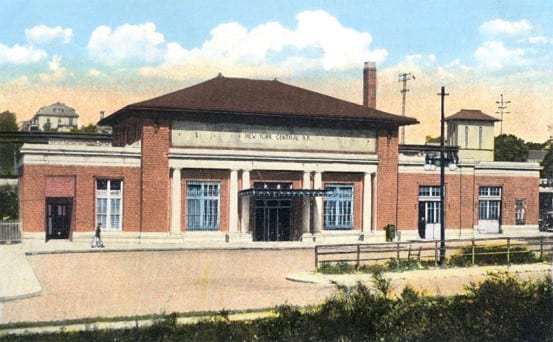
Postcard view of Mount Vernon station
From the platform level one would hardly notice the history that surrounds this Metro-North station. A walk around the property at street level one discovers several exits long closed and covered in concrete. Behind masses of tall weeds is another former exit, the concrete marked with a 1916 date. The diamond in the rough, however, is the old station building, or rather its fa̤ade. A sgraffito panel bears the traditional symbols of transportation Рthe winged wheel and the caduceus Рpositioned between the text identifying the station as one of the New York Central Railroad. Besides this panel the adornments on the building are few, with the exception of a few sculpted flowers, surrounded by what could possibly be oak leaves.
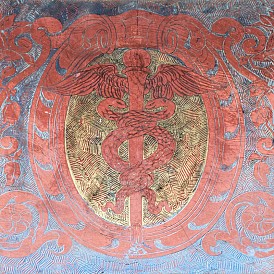 Â
 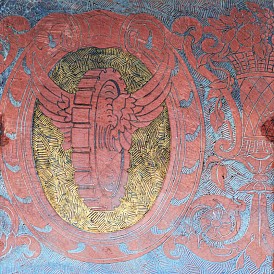 Â
 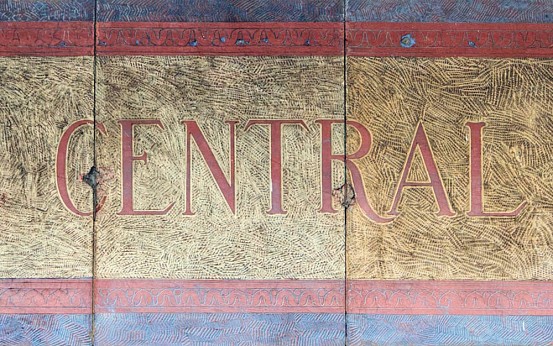
Detail shots of the sgraffito panel on Mount Vernon West station.
Though the building is now covered in grime and graffiti, it is undeniable that at the time of completion this red brick building with limestone paneling was quite beautiful. Its sgraffito panel – an art technique which uses colored plaster applied to a moistened surface and scratched to reveal details – is unique among local train stations. While the building is not quite as embellished as the station at Yonkers, it is still a significant building reflecting the importance of Mount Vernon.

Q&d map of Mount Vernon showing the locations of the old and new stations, and how the rail line was rerouted through town. Based on a map found in the 1914 edition of the G.W. Bromley & Co. Atlas of Westchester County, via the David Rumsey Map Collection. If you want to download the high res original, which shows individual tracks and sidings click here.
In the early 1900s Mount Vernon was experiencing significant development and was certainly an important stop on the Harlem Division, certainly warranting a new, larger station. However, there was yet another important reason why the town needed a new train station. If you’ve ever had the joy of being arrested by the MTAPD and taken to their station in Mount Vernon you are familiar with MacQuesten Parkway, the street on which the police station is located. MacQuesten Parkway was once known as Railroad Avenue, and the Harlem Division ran not far from where that police station is today. As the Harlem Division was electrified up to North White Plains, some adjustments were made in its route, one of which was in Mount Vernon. Just north of the border with the Bronx the line was raised and shifted about two blocks to the west. This allowed the elimination of a grade crossing in the city, and allowed the line to be four tracked.
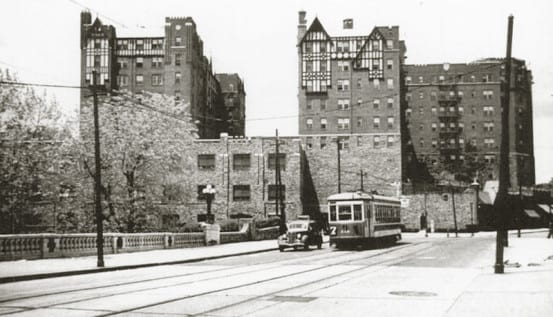
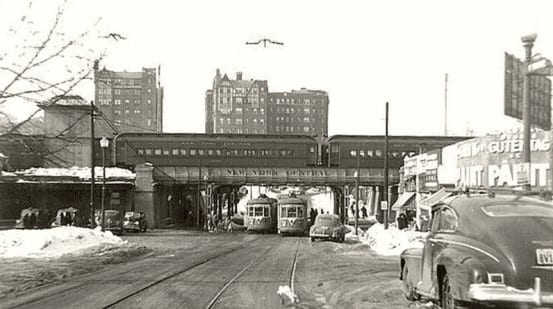
An older face of Mount Vernon – the #7 trolley line connecting Yonkers and Mount Vernon ran right next to the station. The first photo, from the book Metropolitan New York’s Third Avenue Railway System shows an eastbound trolley just west of the station. The lower photo from SoYo Sunset shows two trolleys crossing under the New York Central’s tracks, and a northbound train departing Mount Vernon station (which is at left, out of the frame).
An array of businesses have found homes in the old station over the years, from a silversmith to a pharmacy, a photography shop, and even a karate studio in the building’s upper floor. The north wing that was demolished and rebuilt has been various banks over the years – in the ’80s the Bank of New York, today Chase. Original details on the inside are very few, but some design work can be found on the walls of an upper hallway.
The current train station, which consists of the tunnels under the tracks, is hardly noteworthy except for the old “M Central” signage and the Arts for Transit piece by Martha Jackson-Jarvis. Upstairs on the platform level one can see the back of the once great train station, now covered in graffiti. It is mildly amusing to note that the words sgraffito – the art found on the station, and graffiti – the spray marks tagged on the historical building both share the same origins. I generally appreciate the graffiti along rail lines, but it is a shame to see it mar a nearly hundred year old station… it seems to be the final, sad outcome of a once proud station, reflecting the downfall of a once great railroad, now long gone.


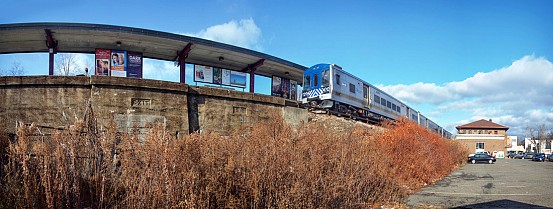
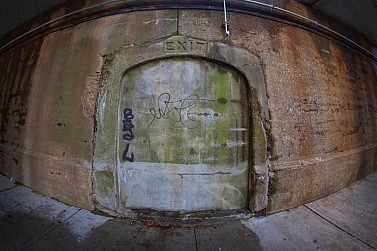
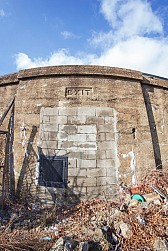
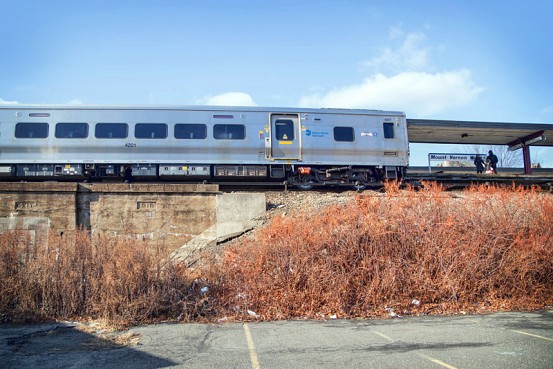
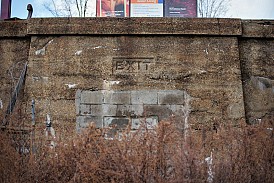
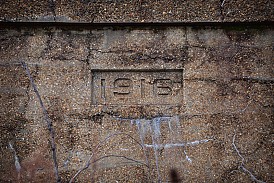

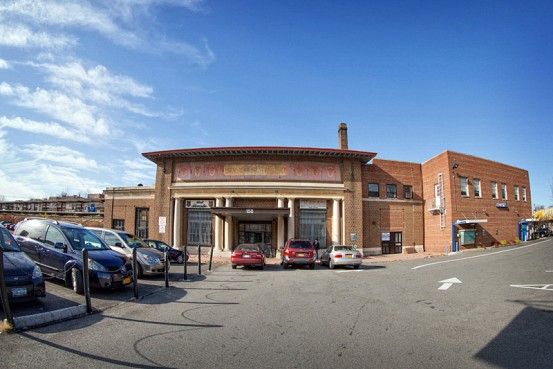
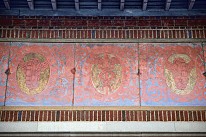

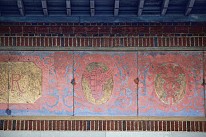
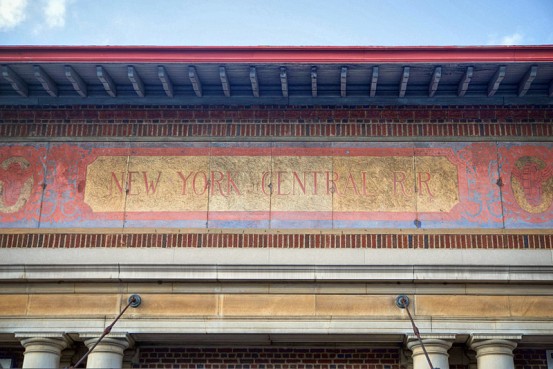
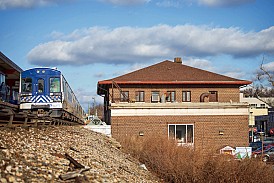
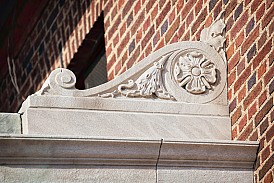
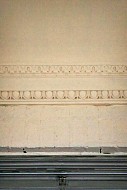
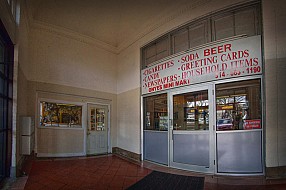
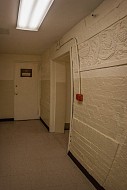
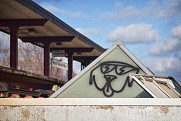

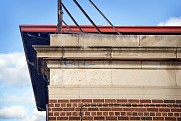
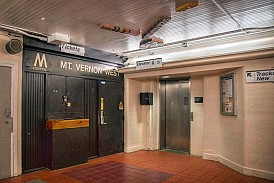
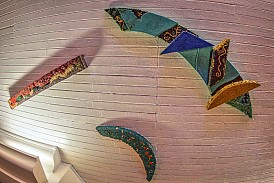


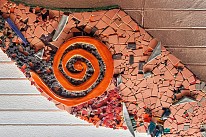

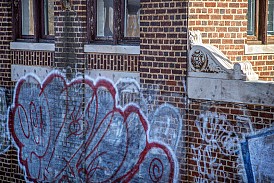
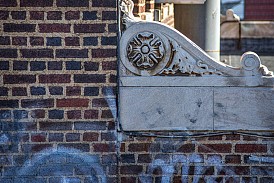
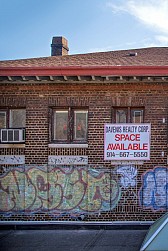
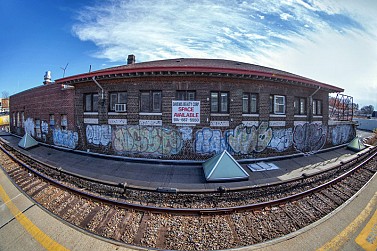
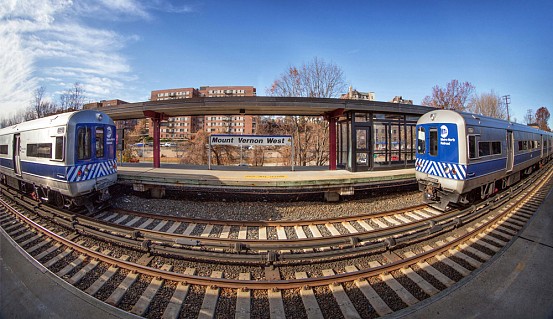
This post is really neat, methinks. I passed thru Mount Vernon daily, in my Fleetwood, White Plains, or NWP commutes, but never detrained there. Back in “my day”, the Harlem went from 4- to 2-tracks just north (RR west) of the station. There was a stub track to the Fleetwood station, which originated/terminated a few trains each weekday. The west side tracks were for MU staging/storage for the locals to GCT. Mount Vernon was a transfer point for express and local passengers to GCT. The freight house, on the east side, was also a REA depot, from which I sent/received my trunk when I was in college, destination: Canton, NY. The freight yard was de-electrified by 1953, but they had a neat hand-cranked crane there that, with help, you could hoist yourself on your ‘own petard’ (read belt). I sure never imagined MacQuesten Parkway was a former ROW. I have pictures of a 4100-series MU derailment there. If I ever plug in my scanner… Happy New Year! It can be better than 2013! Bill
Anybody know when the original station along the old alignment was built?
There are some great photos here and some great information. I think it’s terrific that Emily put this up. She mentions there were once three major New York Central passenger station buildings in Westchester — at Yonkers, Mt. Vernon and White Plains — and the first two still exist. Yonkers has been magnificently restored while Mt. Vernon West has been ignored. That can change.
One fact I’m curious about is, the Central began using the new four-track elevated right-of-way through Mt. Vernon in March 1910. The new station did not open until five or six years later. What did the ridership use in the interim?
Old news articles from the period say they used the old station, located two blocks away. I saw something similar at White Plains in the 1970s when the old station remained in use but the new high-level platforms were two city blocks away.
Emily,
Thanks for covering this station, which brings back some family memories. My dad commuted out of Mount Vernon West for 10-15 years. My second car (1970 Chevelle convertible) was bought at the adjacent Rapetti gas station (now out of business). My first attempt at railfanning happened slightly north on MacQuesten Parkway where the potato packing company was.
Tom